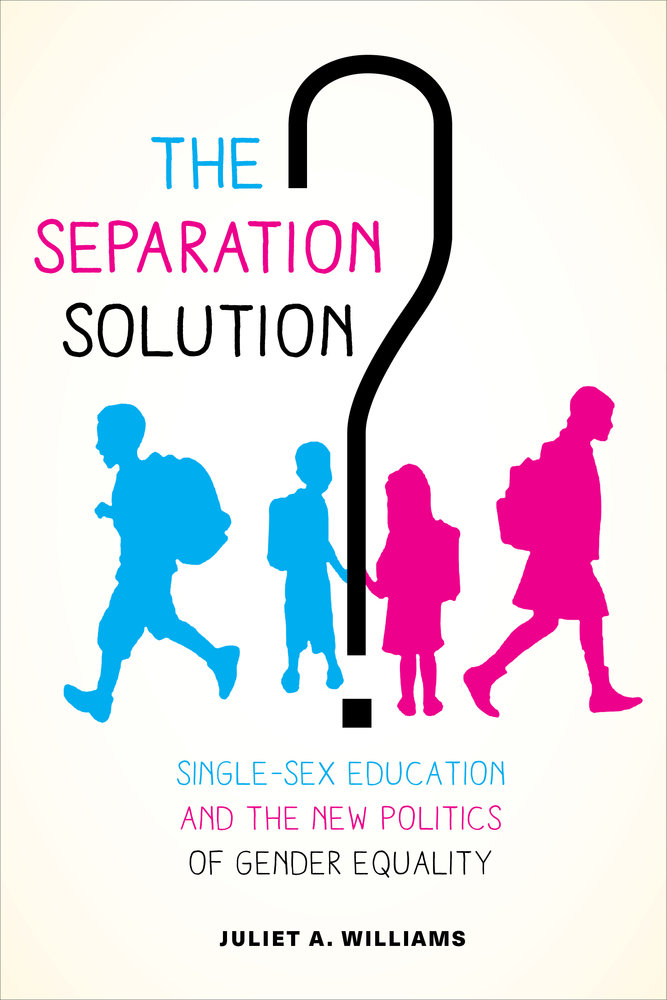
Juliet Williams is a professor in the UCLA Department of Gender Studies, and the author of the forthcoming “The Separation Solution: Single-Sex Public Education and the New Politics of Gender Equality.” This op-ed appeared Jan. 25 in the Los Angeles Times.
In her first days on the job, L.A. Unified’s new Superintendent Michelle King suggested that single-sex education might attract more families to the district and improve student achievement. She wouldn’t be the first district leader to vest hope — not to mention public funds — in all-boys and all-girls schools. But LAUSD should be wary of segregating its students by sex.
The notion of boys’ and girls’ schools conjures rosy images of elite private institutions, but the history of single-sex education in the United States is rife with misguided prejudice. In the 1870s, retired Harvard professor Edward H. Clarke ignited popular interest in single-sex education — by arguing that exposing adolescent girls to the rigors of a standard education would cause their reproductive organs to wither. In the 1950s, after racial segregation was declared unconstitutional, sex-segregated public schools were created across the South to keep boys and girls of different racial backgrounds apart.
Today, in a major reversal, single-sex education has found political champions among supporters of gender equality and those who believe that black and Latino boys in particular will benefit from being educated apart from their female peers. In 2001, then-Sen. Hilary Clinton co-sponsored a provision of the No Child Left Behind Act that provided federal funds to fledgling single-sex public schools, spurring local school districts across the country to experiment with sex segregation.

A few years later, however, a government-commissioned study noted a lack evidence proving that single-sex education improved student performance. The Bush administration decided to press forward anyway, and in 2006 issued guidelines signaling it wouldn’t go after single-sex public schools for violating laws against sex discrimination in education. Today, there are nearly 80 single-sex public schools in the U.S., up from just a handful three decades ago. Hundreds more schools separate boys and girls during academic instruction, though the campuses are technically coed.
So, how’s it going?
Supporters point to a few carefully chosen examples to prove single-sex education raises test scores and boosts students’ confidence. But the larger story is the overwhelming number of single-sex public school programs that haven’t produced any positive results. In 2014, researchers Erin Pahlke, Janet Shibley Hyde, and Carlie M. Allison published a meta-analysis of existing studies on single-sex instruction. Their exhaustive review found no significant advantage, for boys or girls, over coeducation.
Yes, there are some terrific boys-only and girls-only public schools out there. But are they great schools because they are single-sex? The evidence suggests not. Research shows that successful schools do certain things — such as creating strong mentoring relationships and keeping class sizes to a manageable level — that benefit students whether boys and girls learn together or apart.
Meanwhile, evidence is mounting that single-sex education can do real harm by perpetuating limiting gender stereotypes. In single-sex schools across the country, girls’ classrooms are decorated in pastels while boys are surrounded by bold colors; girls are assigned to read romantic fiction, while boys are given non-fiction books; boys are subjected to frequent drills and timed tests, while girls are assigned group work and non-competitive activities — and on and on.
These “gender-sensitive” teaching methods sometimes are dressed up in the legitimating jargon of neuroscience, but the popular notion that boys and girls are “hard-wired” to learn differently rests on gross generalizations about sex differences in the brain. Today, much of the so-called “science” of sex difference has been debunked, but that hasn’t kept public schools from modeling programs on bogus theories. As a result, boys are being deprived of the opportunity to develop crucial social skills, such as working collaboratively and thinking creatively, while girls are being denied the opportunity to build test-taking skills and learn how to succeed under pressure.
Past mistakes don’t prove that single-sex schools can never work in public education in the future. But unless LAUSD takes a critical look at the facts and research on single-sex education, it hardly can be expected to do any better moving forward.




